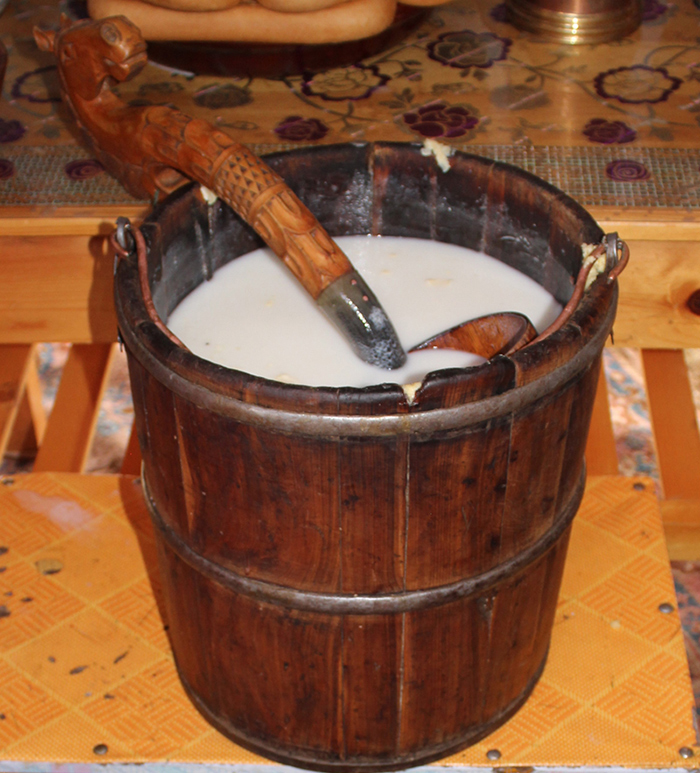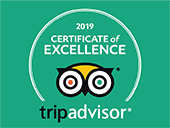
Mongolian traditional food and beverage
Dairy products called "White Food"
It differs greatly about in variety and taste and includes milk, which is regarded as a symbol of unselfishness, purity and kindness, urum (a thick layer of cream), Mongolian butter, aaruul (dried curd), and a soft of kefir yogurt, curd, etc other milk products.
Airag
Airag is Mongolian traditional drink. Rural people making summer time in it. 1000-3000 times bit it in cow's skin bag. (leader bag) Mongolian people used to airag in Naadam festival, wedding, New year and others. Some people can drink 2-3 letre one sit. Airag has included 7-8% of alcohol. So you will drink a lot of airag maybe you hang over. Airag is Mongolian respect and safely drink so you never to spit and drop it outside. During the Naadam and New year festival who win the wrestling competition, people present him with one big bowl airag. Also, horse racing competition whose horse wins people drop the airag horse's croup.

Mongolian famous and tasty airags originated from Bulgan, Arkhangai, Ovorkhangai provinces. Airag gives strength and cheerfulness and it destroys pathogenic microbes in the intestines and helps improve the living body metabolisms. If you visit the Mongolian family or wedding people give you one big bowl airag. Maybe you can't drink it just try to sip it. ( airag is soft lime).
Boodog (Mongolian Barbeque)
Commonly used in marmot and coat involves removing the bones( and bowels from the skinned carcass through the neck red hot stones are put inside the carcass closed and the neck opening. Then the carcass is barbecued. The meat roasted this way is tender tasty and fragrant. ) innards of the animal, whilst leaving the meat bones and skin intact, then placing red hot stones inside the body of the animal to cook the meat sometimes inside the boodog may you make vegetables and some pepper and salt. If you bring hot stones it will be good for relaxing also health.
Khorkhog
It is prepared by cutting up the meat of the sheep and coat and placing it in a container together with hot stones while heating from the outside. Some people add and fixed many kinds of vegetables also pepper and salt. Khorkhog was a cooking method commonly used by soldiers on a military campaign in earlier centuries as the meat of a large animal such as a deer or gazelle could thus be cooked in its own stomach thus eliminating the need for carrying heavy pots or special utensils. Usually, a man making Boodog and Khorhog.

Tea with milk
Usually used to tea cow, camel and sheep milk. May you visit Mongolian nomadic family first they served you tea with milk. The Mongolians drink tea with milk with salt. Sometimes the tea is cooked with rise, dumplings, and flour. It preparing is easy first water and add brick tea salt then milk and boiled it is ready. Some Mongolian ethnic groups drink tea without salt. Usually, Mongolian old people drink tea about 1-3 l a day. Also, Mongolian people follow traditional medicine. For example, if I grip or cold makes a 7 dumplings tea with milk. After you will be ok.

Vodka/White vodka/Shimiin arkhi
Mongols have made vodka for many centuries since the first Mongol people, hunnus. Making vodka is a complex process and requires a lot of skill and the right materials. The process of making vodka has been passed down through many generations, from father to son, and mother to daughter. In the paragraphs below I will attempt to describe the process of making Vodka. First you need a few important materials; to bowls, (one large and one is slightly smaller bowl ), a cylinder or bottomless barrel (the cylinder should fit snugly around the large bowl), a bucked, and of course a good fire. Another critical material is cow's milk. Once cows have been milked, the milk must be churned. The milk is must be changed into buttermilk or yogurt. Next, a fire is made then the large bowl is placed over the fire and the yogurt is poured into the bowl immediately, the bottomless barrel is put over the large bowl and the smaller bowl is placed on top of the barrel. The smaller bowl is then filled with water.

However, the barrel is not empty. Inside the barrel is a bucket that hangs between the two bowls. This bucket is very important because it catches the newly made vodka. Now the prepare must wait; the yogurt is boiled. As the steam from the yogurt rises it hits the bowl of cold water. At this point, the steam condenses back into a liquid. The liquid slowly drips into the hanging bucket, as time passes the bowl of cold water will get warm, so the preparer must change the water but "be careful of the steam". Once the process is completed, the arkhi is poured out and thrown into the fire. This is considered an offering to the god fire. If the arkhi makes a flash (blue flame)than the arkhi is good. Arkhi just made in the countryside of Mongolia. But people who live in the city can enjoy arkhi because their families in the countryside often send them some.
Borts (dried meat)
.jpg)
The Mongolian nomadic way of life and the countries' climatic conditions has given rise to specific methods of preserving meat. The most widespread one is air - drying or bortsloh. Beef is cut into long strips that are hung in the shade. The meat dries very quickly, becoming so hard that you can not cut it with the knife. Before using the dried meat it is powdered and put into boiling water. In a minute you have a nourishing broth.













